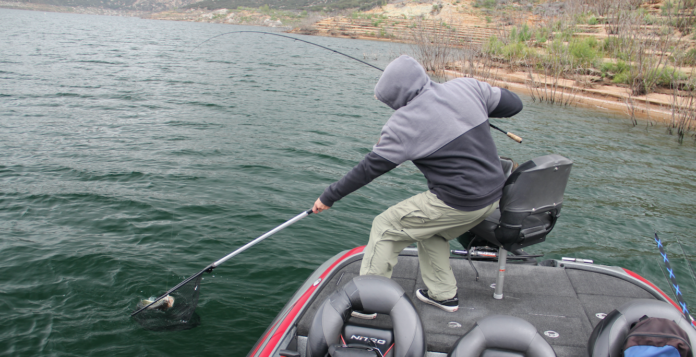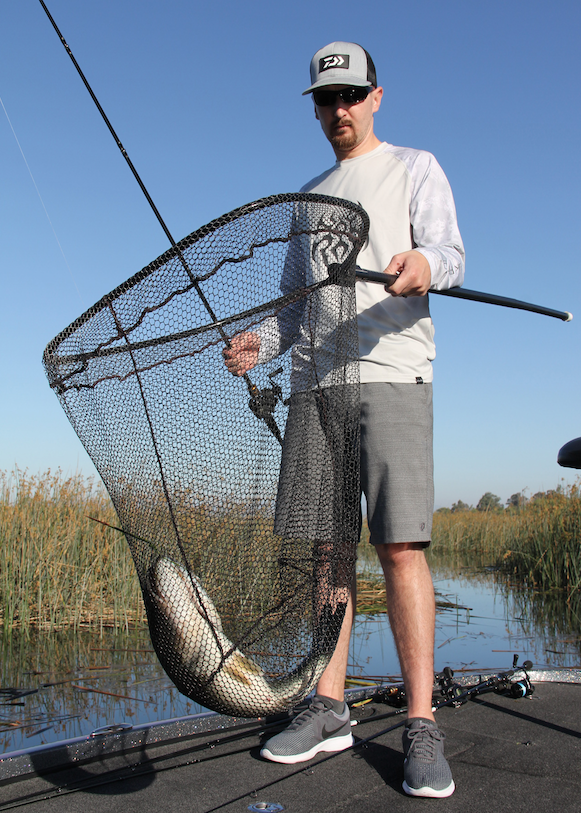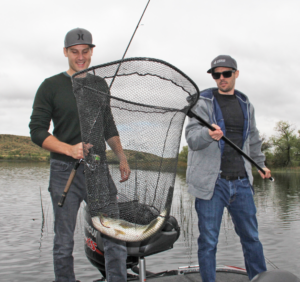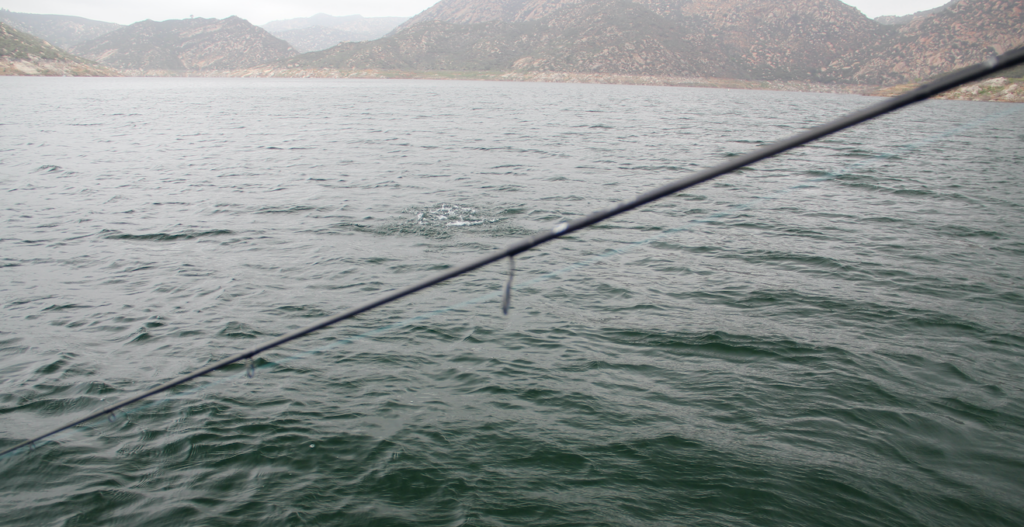
BY GEORGE KRAMER
I don’t know when you developed your now established fishing methods, ideas about bait selection or angling techniques, but when it comes landing fish, like a lot of us, you probably learned about netting fish – in the crisis of the moment!
Yet, these crucial, crazy moments — even when things could have been handled better — are quickly forgotten in the glow of the fish landed and the photos taken. I say that because I regularly see evidence that what I’ll call “shaky technique,” adding more drama than is necessary. It appears until things really go bad, and we lose a key fish, it’s then we finally try to fix the problem.
In truth, though, I can say that I had not even considered this topic worth covering until spending some time on the water with some less experienced, or untrained fishermen. Things that I would never think for a moment could happen, happened. So let me share some thoughts about netting a bass.
First, I would ask, just when should you net the fish? No, that’s not a trick question, but not as obvious as one might think either. I’ve discovered that there is a lot more anxiety in the process of netting than I would have expected. And probably I thought that because I have forgotten that same angst I once endured over the possibility of losing, missing or knocking the fish off the hook, and then being blamed for my failure.
To avoid this phobia to the angler’s call of “fish” or “fish-on” one needs to rely on personal composure. Otherwise, that signal is often met with a partner’s scramble to go from one place on deck to grab the net and then return to the rail ready to scoop — all while the fish is still a boat length or two away! While I admire a partner’s readiness, the fact that he may have left his line in the water where the boat might drift over it, or cross paths with the hooked fish, is just more danger waiting to happen.
Yes, there are times when the call sounds for an immediate net job. That emergency might be due to wind blowing hard and pushing the boat toward the fish. Or it might be the boat’s proximity to a rock or tree hazard, or for you sharp-eyed anglers, seeing the lure in fish’s mouth is not hooked well. But most of the time, if the rod is bent and the angler is gaining line there is no need to rush.
Out on the water these are things that can be coached. Letting the less experienced angler know everything is under control, that he has time to reel in, and that he or she can relax for those moments before the fish is ready.
Not long ago, I had a partner ask a very smart question after trying to follow my directions to keep the rod bent while fighting the fish — based upon what the fish was doing. I realized then that what the angler was doing is just as critical to the landing as what I would do with the net.

Here’s what I mean. When jig or worm fishing, most veteran bass anglers would agree that a fish is first hooked with a vertical strike motion. Because you need to drive the single hook, this motion directs the forces (human and those built into the graphite shaft) to that end. However, as that fish is either forced to the surface or jets upward in response to the hook, the angler’s immediate response should be to lower the tip to the surface — either left or right.
We talk about this as a method to “keep the fish from jumping” but specifically, we are trying to keep the fish “in the water” where the friction of its body in the liquid keeps the line tight — unlike that same-sized fish while it’s in the air. But here’s where my angler friend’s question made so much sense.
When you’re working the fish to the boat, you are usually pulling to your strong side as right or left handers in the direction the fish is going. We do this reeling, unless the fish surges and angles off where we stop cranking and let the bent rod (and reel drag to some degree) “fight” the fish. In most cases with the average 2- to 4-pound bass, getting it close happens pretty quickly. So quickly, in fact, when you continue to work the fish and keep the rod bent, you ultimately get to a place where you can’t keep the line tight with the rod. My young partner voiced his concerned because he was trying to follow the standard fish-fighting program but ended up with a very short line from the tip.
The fact is the only place you can regain the tight line and a bent rod next to the boat is bringing the rod back to the vertical position. There is no left or right and the fish is likely to dive under the boat, forcing the netter to chase or wait until he can see it. This turns an easy scoop into a guessing game.
Afterwards we gave it some thought and determined that while the net man is stuck to the gunnel, it’s the angler who has some options. So, if he were to target a rough distance of maybe five feet from the hull and brought the fish to that point, then the combination of five feet of rod (in front of the reel) and five feet of line out to the hook would put the fish in a place where the rod would be bent, and the fish controlled.

This angler control (sometimes it’s anything but true control) is critical for the one with the net. The goal is to scoop the fish head-first, but an anxious netter may have the fish direction right, but not recognize how far below the surface it may be. Also, when the fish tries to escape by moving away from the theoretical “5-foot range,” you don’t want to chase. This is really not the best time to use more net handle because the farther out you extend it, the worse a tool it becomes. Rather, it would be better if both aboard use more patience and wait for the fish to turn back.
While this methodology is logical in theory, some fish, especially bigger fish, are doing everything in their power to escape. If you happen to be in tournament competition and you see the fish in full prison break mode, you may have to use more handle (length) to reach it. I know what that feels like. In fact, there are times out there where you wish you had a 10-foot handle. But that’s not practical.
Under normal circumstances, the angler still needs to work with the netter. Sometimes the goal is to bring the fish alongside the foredeck, however, sometimes a hot fish will decide to keep going, and you will need to go another half a lap; under the trolling motor with your rod and finally make the “scoop” on the opposite side of the boat. As long as you keep the netter informed, he won’t be stepping on rods or kicking utility boxes off the deck. And he won’t be guessing which way the fish is moving so he can stay ahead of it.
Once your guided fish is heading toward the mesh, it’s generally an easy dip with an upward lift. If the fish balks and won’t come up, then the netter should not stab, rather pull the net out of the water and reset. It’s one thing to put it in at the right moment to land the fish and it’s another to leave it in the water having missed or mis-calculated and then try and net a fish that has changed directions. The submerged net is not very nimble.
I’m sure you have tried-and-true method for netting bass in your boat, but then, so did I. And now the job is a little less risky.




